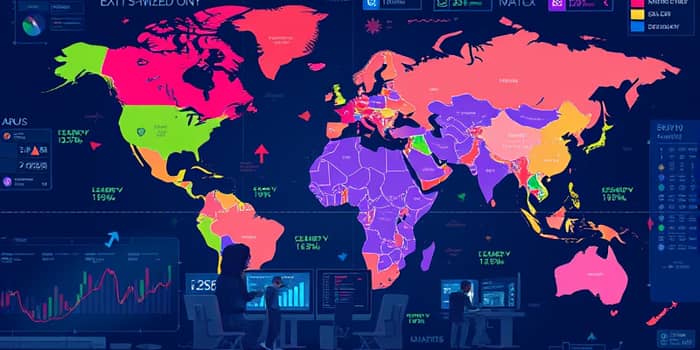
In 2025, investors and portfolio managers are navigating a landscape shaped by subtle shifts in credit conditions, diverse regional trends, and evolving sector outlooks. Charting these changes across holdings is essential for informed decision-making and risk management.
This article offers a comprehensive guide to understanding recent credit rating migrations and translating agency insights into practical strategies for holdings analysis. We explore the global macro context, regional and sectoral variations, specific data on rating actions, and the implications for portfolio mapping.
The starting point for any mapping exercise is the overarching economic environment. According to leading rating agencies, global credit conditions in 2025 will remain broadly supportive but marked by uneven performance across regions and sectors.
Fitch Ratings projects world GDP growth will dip to 2.6% in 2025, down from 2.8% in 2024, driven by persistent trade tensions and uneven regional recoveries. Major central banks in developed markets are expected to begin cutting interest rates later in the year, which should ease refinancing pressures but may proceed at different paces in the US, Eurozone, and Asia.
Specifically:
While many regions and asset classes carry a neutral outlook for 2025, certain pockets exhibit significant divergence. Mapping credit changes at the holding level requires dissecting these nuanced trends.
Chinese real estate remains under intense pressure. Developers are facing liquidity strains and falling sales, translating into multiple downgrades by both Fitch and S&P Global. Similarly, North American structured finance segments—particularly CMBS and non-prime RMBS—have seen an uptick in negative rating actions as refinancing risks rise.
Certain sectors are bucking the trend. Global aerospace and defense companies are enjoying improving outlooks amid robust order backlogs and sustained government spending. Meanwhile, many corporate issuers have extended debt maturities, bolstering liquidity and reducing near-term downgrade risk.
Both Fitch and S&P Global publish detailed appendices compiling rating actions by geography, sector, and asset class. Key statistics for mid-2024 through mid-2025 include:
Projected default rates for high-yield corporate issuers are expected to decline marginally in 2025, though lowest-rated borrowers remain vulnerable to market volatility and geopolitical shocks.
Translating aggregated rating actions into a coherent picture for a specific portfolio involves multiple layers of analysis:
For a holdings-level credit map, overlay these factors on a visual matrix or geographic heat map that highlights both rating trajectory and concentration of at-risk positions.
As credit conditions evolve, portfolio managers must remain vigilant to liquidity and refinancing risk. Key considerations include:
To implement a robust mapping framework, follow these steps:
1. Aggregate rating action data from agency reports, ensuring breakdowns by region and sector.
2. Create a color-coded grid or map that reflects current and projected outlooks for each holding.
3. Integrate macroeconomic indicators—such as expected rate cuts and growth forecasts—to contextualize potential rating shifts.
4. Conduct scenario analyses that simulate adverse developments, including sudden spikes in default rates or policy tightening.
Mapping recent credit rating changes across holdings is an essential practice in today’s complex financial environment. By combining detailed rating action statistics with macroeconomic and sector-specific insights, investors can craft more resilient portfolios and preemptively address emerging risks.
As we look toward 2025, the balance between supportive monetary policy and persistent uncertainties underscores the need for dynamic monitoring and agile portfolio adjustments. Armed with the methodologies and data outlined above, portfolio managers can navigate the shifting credit landscape with confidence and precision.
References













